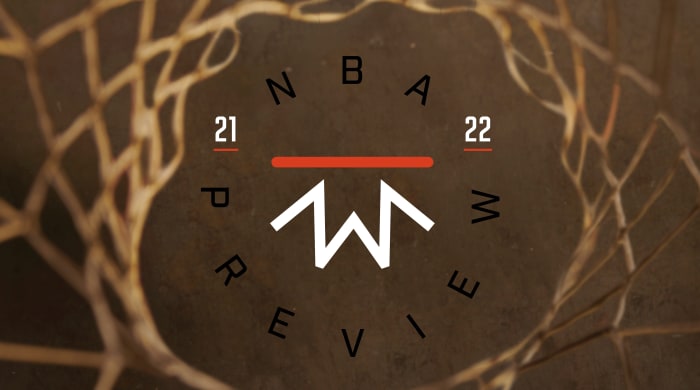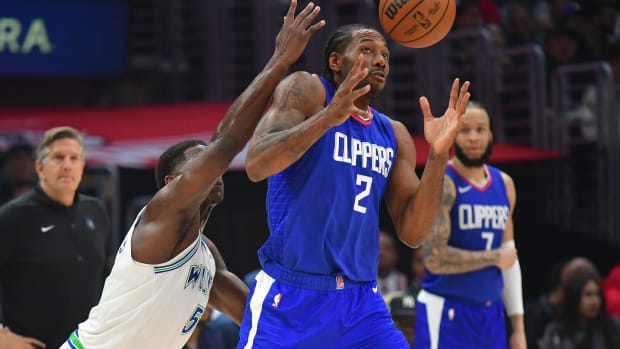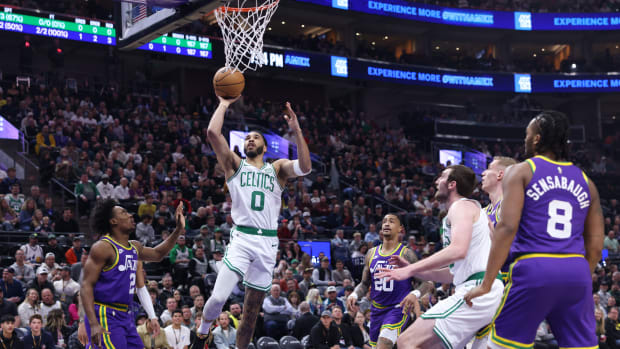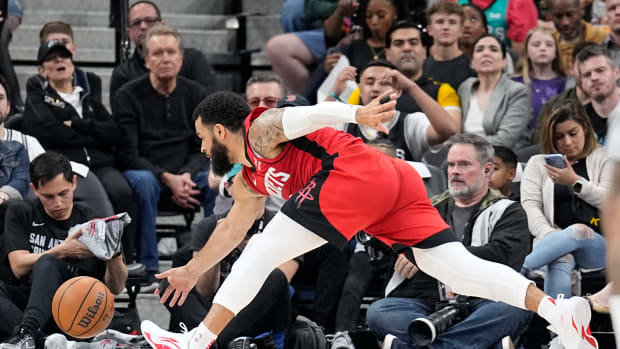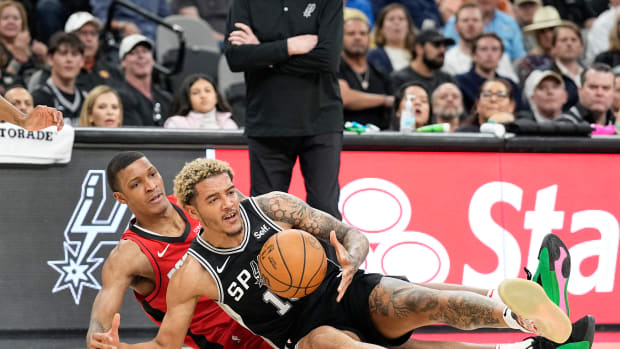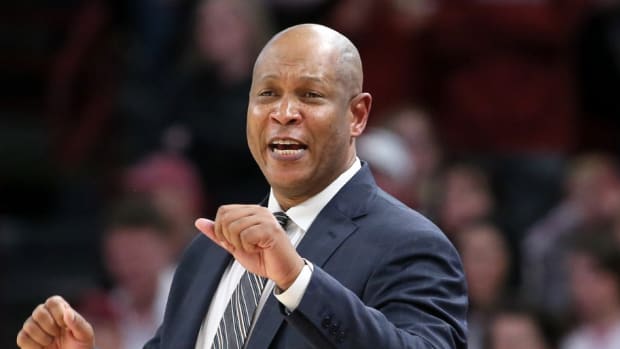In the NBA, you’re selling either championships or hope—so goes the modern maxim. A handful of teams have a shot at the title each season. All the others tout the promise of tomorrow: the athletic marvel they just drafted, the savvy executive they just hired, the stockpile of picks they have collected.
Sometimes, hope manifests in a more tangible, tantalizing form: a young sharpshooter’s dominating in his playoff debut, silencing the league’s fiercest fans, taking a bow for emphasis. An international playmaking prodigy, seizing the triple-double crown in his second season.
Hawks fans are giddy over Trae Young’s sudden stardom, and the potential for a decade of deep playoff runs. Mavericks fans shriek with joy at every dazzling pass and every clutch shot that flies from Luka Dončić’s fingertips.
By any measure, Young (age 23) and Dončić (22) are budding superstars, the kind who can without a doubt transform a franchise and define an era. You could envision a not-so-distant future when these two ethereal talents—traded for each other on draft night in 2018—will face off in the Finals, perhaps repeatedly.
But you would be wise not to bet on any of it. Not the titles, or the Finals appearances, or even the perennial postseason runs—at least not with both young stars in their present uniforms. It’s not that they aren’t capable. It’s just that nothing is a given to last long in today’s NBA.
We are living in an age of extreme volatility, when superstar wanderlust, short contracts, draconian luxury-tax penalties and a general impatience scramble the power balance on a near-annual basis. We might even be witnessing the end of the NBA dynasty as we know it.
Consider Sports Illustrated’s Top 100 list, where nine of the top 19 players (and five of the top 10) changed jerseys at least once in the last three years.
Consider that four of the five players to win Finals MVP in the last decade (LeBron James, Kevin Durant, Kawhi Leonard, Andre Iguodala) have changed teams at least twice.
Consider the 76ers, a team with two young All-Stars who as recently as, um, June, looked like a perennial contender, but are now seemingly in utter disarray.
Consider the Rockets, who went from West powerhouse to bottom dweller in the span of a few months last season, after James Harden and Russell Westbrook both demanded trades.
Consider the Trail Blazers, who could be one bad losing streak away from a Damian Lillard trade demand. Or the Wizards, who could be one bad season away from a Bradley Beal departure in free agency.
Consider the Pelicans, who lost their franchise star (Chris Paul) to a trade demand in 2011, lost his successor (Anthony Davis) to a trade demand in ’19 and are now anxious over the simmering frustrations of their newest linchpin, Zion Williamson, who is starting his third NBA season.
Or consider this: If the Bucks fail to repeat next June—a reasonable scenario, given the specter of that microwaved superteam in Brooklyn—the NBA will crown its fifth new champion in five years. That hasn’t happened since 1977 to ’81.
This is where we are. It’s hard to land a franchise star, even harder to get him a worthy costar and harder still to assemble, pay and retain a quality supporting cast, at least without triggering tens of millions in taxes.
And so we get this jarring team photo of the 2020 NBA champions, who retain just five players from the roster that won the title 12 months ago—including two (Dwight Howard and Rajon Rondo) who left and came back in that span, and one (Talen Horton-Tucker) who didn’t play in the 2020 Finals.
The ’19 champion Raptors were promptly kneecapped by Leonard’s departure for the Clippers that same summer. The ’18 Warriors were undone by injuries, sure, but also by Durant’s defection to Brooklyn.
Although the 2021 champs in Milwaukee return their three top players—Giannis Antetokounmpo, Khris Middleton and Jrue Holiday—they’ve already lost a key starter (P.J. Tucker) to luxury-tax concerns. The tax contributed to the (arguably premature) demise of the LeBron-era Heat in ’14. Tax aversion eroded the Rockets’ rotation during the Harden era, breeding the discontent that later fueled his trade demand.
And of course, it was the Thunder’s aversion to the tax that spurred the trade of Harden to Houston in the first place back in 2012, when the NBA first instituted the punitive new system as part of the labor deal signed a year earlier. That’s also when the league reduced contract lengths to either five years (for “Bird” free agents) or four years, giving the stars more leverage than ever.
League officials were almost gleeful about the Harden move at the time. Player sharing was the Orwellian term coined by then commissioner David Stern, who wanted the elite talent more evenly dispersed across 30 franchises. The 2011 labor deal didn’t kill superteams, as some owners and league officials hoped, but it did make it far tougher to build and sustain them.
“Before, you would look at a seven-to-10-year window,” says a longtime team executive who has worked for multiple contenders. “Now you want to maximize three to five years, as it may end or likely have dramatic change afterward.”
The Nets look overpowering with Durant, Harden and Irving—though, given their ages and injury histories and eccentricities, there’s no telling whether they’ll win even one title, much less become a dynasty. The Lakers have shoehorned Westbrook next to James and Davis, but it cost them considerable depth, and it’s an awkward fit at best—more gamble than guarantee.
The oddsmakers say we’ll get a Nets-Lakers Finals next June. But would it be that shocking if we ended up with Bucks-Jazz, or Heat-Suns, or Hawks-Nuggets? The absence of a dynasty, the dispersal of talent and all the asterisks in Brooklyn and L.A. at least provide a benefit: something approximating parity. “It seems like they got their wish,” salary-cap guru Larry Coon says of NBA officials. “The question becomes:
Is it better now?”
That’s today’s NBA: ephemeral, inconstant, dizzying, checkered with caveats.
Even the NBA’s most recent dynasty, the Warriors of 2014 to ’19, was born of a once-in-a-blue-moon salary-cap spike that made the Durant acquisition possible. (Emblematic of the age, their only dynastic rival was not a franchise, but a person: James, who made nine Finals in a 10-year span, with three different teams.)
Could the reloaded Warriors, with a healthy Klay Thompson and Steph Curry playing like an MVP, regain their supremacy? Can James, who turns 37 in December, stay dominant long enough to forge a new purple-and-gold dynasty? Can the Bucks, who won their first title with an ensemble cast, raise multiple banners without a top-10 player besides Giannis?

Injuries and free agency derailed the Warriors' dynasty in 2019.
John W. McDonough /Sports Illustrated
Can any franchise keep its core together beyond a three-to-five-year window anymore? Can the promising Hawks become contenders before luxury-tax concerns start eroding the roster around Young? Can the Mavericks—having gambled (and so far lost) on their Kristaps Porziņģis investment—find a true costar for Dončić before he starts dreaming of glitzier locales?
Maybe another cap spike will come with the league’s new TV deal in 2025, fueling the next Warriors-esque empire. Maybe another LeBron-like figure will emerge to dominate the landscape. Maybe some clever GM will assemble an elite cast without angering the tax gods. “Someone’s going to figure it out,” assures a veteran team executive.
Perhaps so. Or perhaps the NBA we see now—of peripatetic All-Stars, perpetually changing rosters and perpetually fretting GMs—is the new normal. Whether they’re selling championships or hope, it all comes with an early expiration date.
































